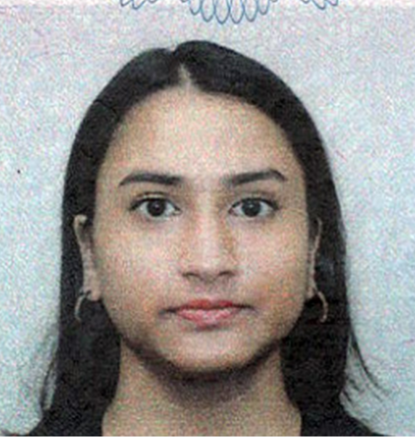
Elon Musk’s satellite-operated internet service, Starlink, is expected to launch soon in India, with the US-based company having cleared the regulatory hurdles. Starlink applied for a Global Mobile Personal Communication by Satellite Services licence in 2022 and with the final approval, will become the third company after Jio and OneWeb to receive such license. Starlink’s entry into the Indian market is one step closer to addressing the existing digital divide in the country but its success will depend on its ability to be competitive in the 5G landscape. The influence of the Internet, particularly in emerging economies, is significant. However, accessibility is often determined by affordability, which varies depending on the specific circumstances of each nation.
Starlink’s entry into the Indian market is one step closer to addressing the existing digital divide in the country but its success will depend on its ability to be competitive in the 5G landscape.
Examining Starlink’s viability in India
Starlink is already operational in multiple countries across all regions, including Nigeria, Peru, Mexico, Portugal, the Philippines, and Australia. Starlink’s main advantage comes from its use of Low Earth Orbit (LEO) satellites, which provide lower latency and have higher-speed internet connections. Installation and deployment are also quicker compared to Middle Earth Orbit (MEO) satellites used by Jio, however, MEOs provide better coverage.
While Starlink has an advantage in internet speed, India’s existing internet infrastructure is robust, with the median mobile internet connection speed via cellular networks being 18.26 megabytes per second (Mbps) and the median fixed internet connection speed is 49.09 Mbps. This means that a major determining factor that will impact the success of satellite internet, specifically Starlink, in India is affordability. Currently, the rates offered by Starlink are too expensive to be functional in India, especially in rural and lower-income households. In Zambia, where its costs are the lowest, the hardware costs are about US$ 500, and the monthly subscription fee is US$ 36. In a country like India, where good alternatives exist, Starlink’s inability to make its prices competitive will harm its success in the Indian Market.
In a country like India, where good alternatives exist, Starlink’s inability to make its prices competitive will harm its success in the Indian Market.
Digital connectivity in India
There were 895.83 million internet users in India in June 2023. With a population of 1.4 billion by February 2024, this means that 35 percent of the population does not have access to the Internet, which has implications for the country’s progress and development. As societies increasingly rely on digital technologies for education, employment, and civic engagement, those without adequate access are left at a disadvantage, hindering their ability to participate fully in the modern world. This digital divide perpetuates socio-economic disparities, limiting opportunities for individuals in marginalised communities. Moreover, such a divide may widen disparities in healthcare, as access to telemedicine and health information becomes crucial. Additionally, the lack of digital literacy in underserved populations could lead to misinformation, further deepening the knowledge gap and exacerbating societal polarisation. Therefore, bridging the digital divide is crucial for fostering inclusivity and ensuring that advancements in technology contribute to societal progress rather than exacerbate existing inequalities.
While Starlink’s goal to provide connectivity to rural and unconnected parts of India is an important step to bridging the digital divide that persists, the company needs to rethink its approach to the Indian market as compared to other developing nations. The government’s Digital India initiative looks to transform India into a leading technology market. To achieve this, the Ministry of Education has focused on rural, tribal, and remote areas to offer education programmes to increase digital inclusion. In 2020, the Department of Telecommunications’ proposal to increase and strengthen digital communications infrastructure was approved by Prime Minister Narendra Modi. The Prime Minister’s Wi-Fi Access Network Interface (PM-WANI) “envisages provision of Broadband through Public Wi-Fi Hotspot providers”. The private sector is also working towards bridging the digital divide. To increase internet connectivity in remote areas, there are initiatives such as Project Taara, a joint effort by Google’s parent company Alphabet and Airtel to bring affordable internet to villages using machines whose beams “provide fibre-optic internet without cables”. Another alternative exists in the form of Open Radio Access Networks (ORAN). They play a crucial role in a mobile network infrastructure by employing cellular radio connections to establish links between individual devices and other components of the network. They aim to disaggregate and standardise these networks, promoting interoperability and innovation by allowing operators to mix and match hardware and software from different vendors.
India's commitment to technological progress demands a comprehensive strategy that addresses multifaceted challenges. To bridge the digital divide at home, the government should focus on enhancing digital literacy and accessibility in rural and underserved areas.
India's commitment to technological progress demands a comprehensive strategy that addresses multifaceted challenges. To bridge the digital divide at home, the government should focus on enhancing digital literacy and accessibility in rural and underserved areas. Implementing inclusive policies that encourage private sector involvement in these regions is crucial, as it not only aids economic development but also promotes equitable access to technological advancements. While licensing and privatisation are effective tools in optimising communication and internet access, regulatory frameworks must be adaptive and conducive to fair competition.
Conclusion
India is positioning itself as a responsible global player by advocating for fair trade practices and contributing to the development of international norms. Its continued prominence in the global technology landscape necessitates a focus on domestic innovation. By addressing the digital divide within its borders and actively participating in shaping global standards, India can not only lead the charge in the technological race but also contribute meaningfully to a more inclusive and equitable digital future for all. Musk's ambitious venture, while technologically advantageous with its LEO satellites, faces the challenge of competing in a market already served by well-established providers. While competition in the communications industry is heavy, Starlink should be a successful player because of its upper hand in latency and internet speed. The success of Starlink in India hinges on its ability to address the crucial factor of affordability, especially in comparison to other established alternatives. Beyond the market dynamics, the broader issue of the digital divide in India necessitates a holistic approach, combining innovative technologies like Starlink with initiatives such as Project Taara and ORANs. Musk's vision aligns with India's Digital India initiative, and success will require adaptability to local challenges and an understanding of the nation's unique digital landscape within the broader global context.
Tanya Aggarwal is a Research Intern at ORF Mumbai.
The views expressed above belong to the author(s). ORF research and analyses now available on Telegram! Click here to access our curated content — blogs, longforms and interviews.




 PREV
PREV


